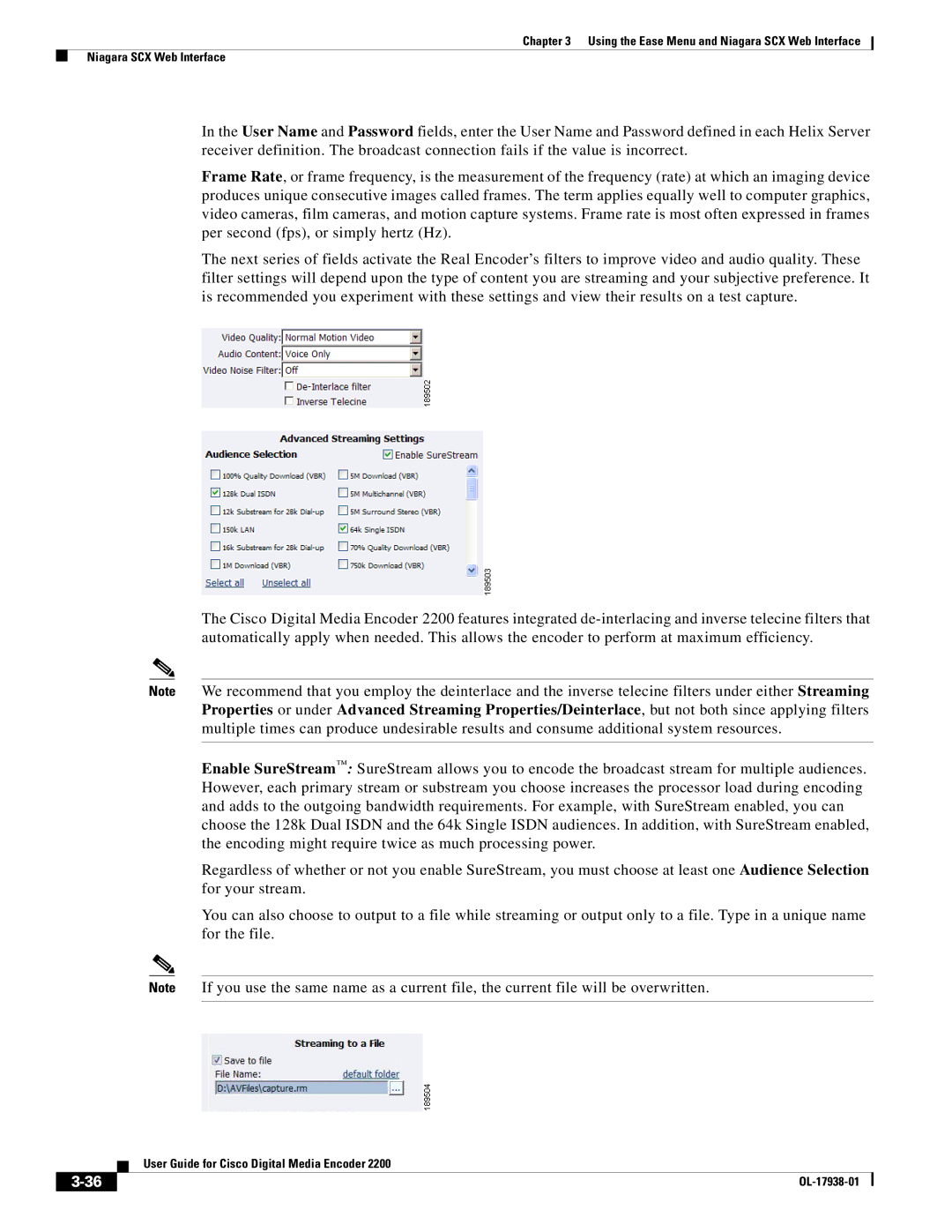
Chapter 3 Using the Ease Menu and Niagara SCX Web Interface
Niagara SCX Web Interface
In the User Name and Password fields, enter the User Name and Password defined in each Helix Server receiver definition. The broadcast connection fails if the value is incorrect.
Frame Rate, or frame frequency, is the measurement of the frequency (rate) at which an imaging device produces unique consecutive images called frames. The term applies equally well to computer graphics, video cameras, film cameras, and motion capture systems. Frame rate is most often expressed in frames per second (fps), or simply hertz (Hz).
The next series of fields activate the Real Encoder’s filters to improve video and audio quality. These filter settings will depend upon the type of content you are streaming and your subjective preference. It is recommended you experiment with these settings and view their results on a test capture.
The Cisco Digital Media Encoder 2200 features integrated
Note We recommend that you employ the deinterlace and the inverse telecine filters under either Streaming Properties or under Advanced Streaming Properties/Deinterlace, but not both since applying filters multiple times can produce undesirable results and consume additional system resources.
Enable SureStream™: SureStream allows you to encode the broadcast stream for multiple audiences. However, each primary stream or substream you choose increases the processor load during encoding and adds to the outgoing bandwidth requirements. For example, with SureStream enabled, you can choose the 128k Dual ISDN and the 64k Single ISDN audiences. In addition, with SureStream enabled, the encoding might require twice as much processing power.
Regardless of whether or not you enable SureStream, you must choose at least one Audience Selection for your stream.
You can also choose to output to a file while streaming or output only to a file. Type in a unique name for the file.
Note If you use the same name as a current file, the current file will be overwritten.
| User Guide for Cisco Digital Media Encoder 2200 |
|
